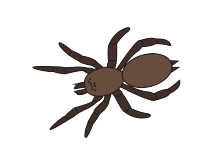Earth Day 2022: Invest in Our Planet.
April 22 is Earth Day, a day when people all over the world focus on caring for the earth and protecting the planet from things like pollution and deforestation. The day brings focus to the environmental challenges our world is facing and raises awareness not only of the problem but also the things we can all do to help make a healthier planet.
Humans have overdeveloped the land, overfished the oceans, polluted the waterways and destroyed the forests. Each year, it is estimated that over 10,000 species become extinct – the actual number is likely much higher.
Earth Day encourages us all to become more mindful of the planet. It asks us to:
Become waste warriors, reducing the amount of waste we produce, recycling what we can, reusing as much as possible and disposing of rubbish thoughtfully.
Plant trees and look after vegetation.
Use water wisely.
Conserve power and turn off lights and appliances.
This year’s Earth Day theme is “Invest in Our Planet”. It is asking people to identify and implement ways of working that are better for the planet and its future.
For First Nations people, caring for Country is part of our everyday lives. It is at the core of our culture. Traditionally our lifestyle and cultural practices revolved around looking after Country and ensuring that each of her elements was protected, healthy and respected.
For millennia, Aboriginal people have operated with sustainability at the core of lifestyle practices. For example, we made sure we left enough vegetation for other animals to eat; we practiced techniques, such as fire-stick farming, to encourage plants and food sources to be plentiful; we hunted only enough food to feed the mob, ensuring every part of the animal was used so nothing was wasted; we collected foods like eggs mindfully, only taking about a third of what was available so there was still enough for other predators and enough to hatch to ensure continuation of the species.
Slowly our ways of working are being recognised and adopted to help care for Country. Fire services are working with Traditional Owners to implement cultural burning methods to help manage the threat from bushfires; First Nations rangers work in National Parks to control weeds and support native species; community groups are volunteering their time to revitalise Country; and mob are sharing their cultural knowledge to support non-Aboriginal organisations to care for Country effectively.
This Earth Day I encourage you to consider First Nations knowledge in your discussions about looking after the planet. We have a number of lessons on the platform that can help –
The Frog and The Two Pelicans Dreaming story (K, 1, 2) is a cautionary tale about using precious water resources carefully.
Bush Tucker Today (K) shows a father teaching his children how to harvest bush tucker safely, taking just what they need for one meal.
Enora and the Black Crane (K, 1, 2) is a Dreaming Story set in a tropical rainforest.
Understanding Country (K-6) provides an overview of the way First Nations people interacted sustainably with Country and what happened after colonisation that prevented the ongoing care of land and resources.
Torres Strait Language Groups – Lesson 2 (3-6) looks at sustainable hunting practices of the Boigu Islanders along with land and ocean management.
The Hawksbeak Turtle Dreaming story (3-6) shows how First Nations people hunted sustainably, removing a turtle that was taking all the fish.
The Trapdoor Spider Woman Dreaming story (3-6) tells of the difficulty of hunting in a desert region where resources are scarce. It emphasises the importance of obtaining food by approved methods (rather than tricking and stealing) and the importance of protecting your catch so you can provide for your mob.
Dreaming story, The Dolphin (5-6), depicts a group that lives off resources in the hills during the winter time and travels back to the coast in summer to eat from the ocean, thereby lessening their impact on the resources that are available in those places.
Cultural Burning (5-6) provides an explanation of fire-stick farming methods which were used for centuries to increase food sources and reduce the damage from bushfires.
We can all learn from the lessons that generations of First Nations people lived by. These are some ideas to consider this Earth Day, and beyond:
Native plants are adapted to the Australian climate. They grow with the usual amounts of rainfall and don’t need weed killers or fertilisers. If we learn about bush tucker food and grow and harvest bush tucker plants we can:
Reduce our use of precious water supplies.
Protect insect species, like bees, by eliminating poisons from our gardening practices.
After the devastating bushfires of the summer of 2019-20, all of Australia has wondered how to prevent such a catastrophe from occurring again. There is increased interest in how cultural burning can be adopted to reduce the fuel load in forests without destroying habitat and fire services are leaning from traditional custodian with these specialised fire-stick farming skills.
Your class could mark Earth Day by investigating First Nations groups who are caring for Country in your area or share a Dreaming story that contains knowledge about sustainability. But don’t stop there! We need to care for our planet every day and we have the oldest continuous living culture in the world right here to learn from!










